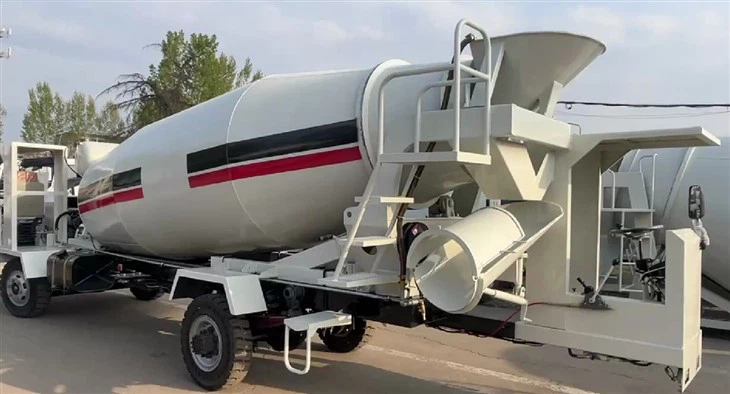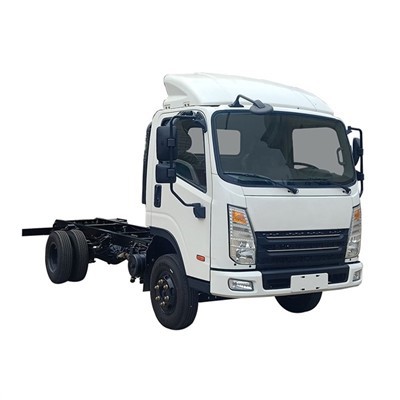Understanding Trucks and Parts: A Complete Guide

In the world of transportation and logistics, trucks play a vital role. From construction sites to delivery services, trucks are indispensable for moving goods and materials. However, to maintain their efficiency, it is crucial to understand the parts that make up these vehicles. This comprehensive guide delves into everything related to trucks and parts, including types, maintenance, and practical tips for owners.
What Are Trucks?
Trucks are motor vehicles designed primarily for transporting cargo. They vary greatly in size, power, and configurations, which allows them to adapt to different transportation needs. At their core, trucks consist of the following elements:
- Chassis
- Engine
- Cab
- Payload area
Types of Trucks
Different types of trucks cater to various industries and purposes:
1. Pickup Trucks
Ideal for personal use and light-duty tasks, pickup trucks offer versatility with a separate cargo area.
2. Delivery Trucks
Used for transporting goods from warehouses to retail locations, these trucks come in various sizes from small vans to large box trucks.
3. Dump Trucks
Constructed for heavy-duty usage, dump trucks are designed to transport loose materials like sand, gravel, and demolition waste.
4. Flatbed Trucks
These trucks feature an open cargo area and are often utilized for transporting heavy equipment and large loads.
5. Refrigerated Trucks
These trucks are essential for transporting perishable goods, equipped with temperature control systems to keep items fresh.
Understanding Truck Parts
Each truck is composed of numerous parts that work together to ensure performance and safety. Familiarizing yourself with these components can save time and money in repairs and maintenance.
Essential Truck Parts
| Part Name | Function |
|---|---|
| Engine | Powers the truck, converting fuel into energy. |
| Transmission | Transfers engine power to the wheels, helping the truck move. |
| Brakes | Slows down or stops the vehicle, essential for safety. |
| Suspension | Supports weight and absorbs shock while driving. |
| Wheels and Tires | Provides traction and helps the truck move on various surfaces. |
| Cargo Bed | Holds and secures items being transported. |
Common Issues with Truck Parts
Understanding common issues with truck parts can help you recognize problems before they escalate.
1. Engine Trouble

Symptoms of engine problems include reduced power, unusual noises, or smoke. Regular maintenance such as oil changes can greatly extend engine life.
2. Brake Failure
Brake problems often manifest as grinding noises, vibrations, or a decrease in responsiveness. It’s crucial to have brakes inspected frequently.
3. Tire Wear
Uneven tire wear can lead to a dangerous driving situation. Regular tire rotation and alignment checks are essential.
Maintaining Your Truck
Proper maintenance is crucial for longevity and performance. Here are some practical tips to keep your truck in top shape.
Routine Maintenance Checks
- Check fluid levels (oil, coolant, brake fluid) regularly.
- Inspect brakes for wear and tear.
- Rotate and align tires every 5,000 to 7,500 miles.
- Examine and replace air filters as needed.
Seasonal Maintenance Tips
Winter Maintenance
Before winter, ensure your antifreeze is at the proper level, check the battery, and use winter tires for better traction.
Summer Maintenance
In summer, inspect your cooling system, ensure the air conditioning is working efficiently, and check for tire pressure regularly, as it can change with temperature fluctuations.
Choosing the Right Parts
Selecting the appropriate parts for your truck can affect performance and longevity. Here’s how to choose the right parts wisely.
OEM vs. Aftermarket Parts
Understanding the difference between Original Equipment Manufacturer (OEM) parts and aftermarket alternatives is key to making informed decisions. Here’s a brief comparison:
| Feature | OEM Parts | Aftermarket Parts |
|---|---|---|
| Quality | Ensured by the manufacturer | Varies by manufacturer |
| Warranty | Usually has a warranty | Warranties vary |
| Price | Generally higher | Lowers prices available |
How to Buy Parts
When purchasing parts, consider the following steps:
- Research reputable suppliers.
- Read customer reviews and ratings.
- Compare prices and warranties.
- Ensure compatibility with your truck model.
Upgrading Your Truck
Upgrading can enhance your truck’s performance, aesthetic, and functionality. Here are some common upgrades.
Performance Upgrades
1. Better Exhaust System
Installing a high-performance exhaust system can improve airflow, boost horsepower, and enhance fuel efficiency.
2. Lift Kits
Lift kits raise the height of your truck, allowing for better ground clearance and improved off-road capabilities.
Aesthetic Upgrades
1. Custom Rims
Changing your truck’s rims can dramatically alter its appearance and performance, especially when paired with high-quality tires.
2. Paint Job
A fresh paint job or vinyl wrapping can transform your truck’s look and protect the original paint from wear and tear.
Truck Safety Practices
Ensuring safety while using trucks is paramount. Here are essential safety practices to follow.
Driving Safety Tips
- Always wear a seatbelt and ensure all passengers do the same.
- Keep a safe distance from other vehicles.
- Be mindful of blind spots and check them frequently.
- Adjust driving habits according to weather and road conditions.
Loading Safety Guidelines

Ensuring that your load is secure is vital for safety:
- Distribute weight evenly across the trailer.
- Use quality tie-downs and straps to secure the load.
- Check load limits and capacity for your truck.
Environmental Considerations
With growing concerns about environmental impact, many truck owners are looking for greener alternatives. Here are several eco-friendly practices:
Choosing Fuel-Efficient Trucks
Selecting a truck with better fuel efficiency can minimize emissions and save on fuel costs. Electric and hybrid trucks are increasingly available and can be worth considering.
Regular Emission Checks
Ensuring your truck passes emission inspections is not only a legal requirement in many areas but also beneficial for the environment. Regular checks can help maintain your vehicle’s efficiency.
Frequently Asked Questions (FAQ)
1. What is the most important part of a truck?
The engine is often considered the most critical part of a truck, powering the vehicle and enabling it to transport loads effectively.

2. How often should I get my truck serviced?
It’s advisable to service your truck every 5,000 to 7,500 miles, or as recommended in the owner’s manual.
3. Can I use aftermarket parts for my truck?
Yes, aftermarket parts can be used but ensure they meet quality standards and compatibility with your truck model.
4. What impacts fuel efficiency in trucks?
Fuel efficiency can be impacted by several factors, including vehicle weight, tire condition, engine condition, and driving habits.
5. How do I know when to replace my truck tires?
If your tires are worn down to 2/32 of an inch or show visible damage and irregular wear, it is time to replace them.
6. What are some signs of brake issues?
Signs of brake issues may include squeaking noises, reduced responsiveness, vibrations when braking, or a warning light on the dashboard.
